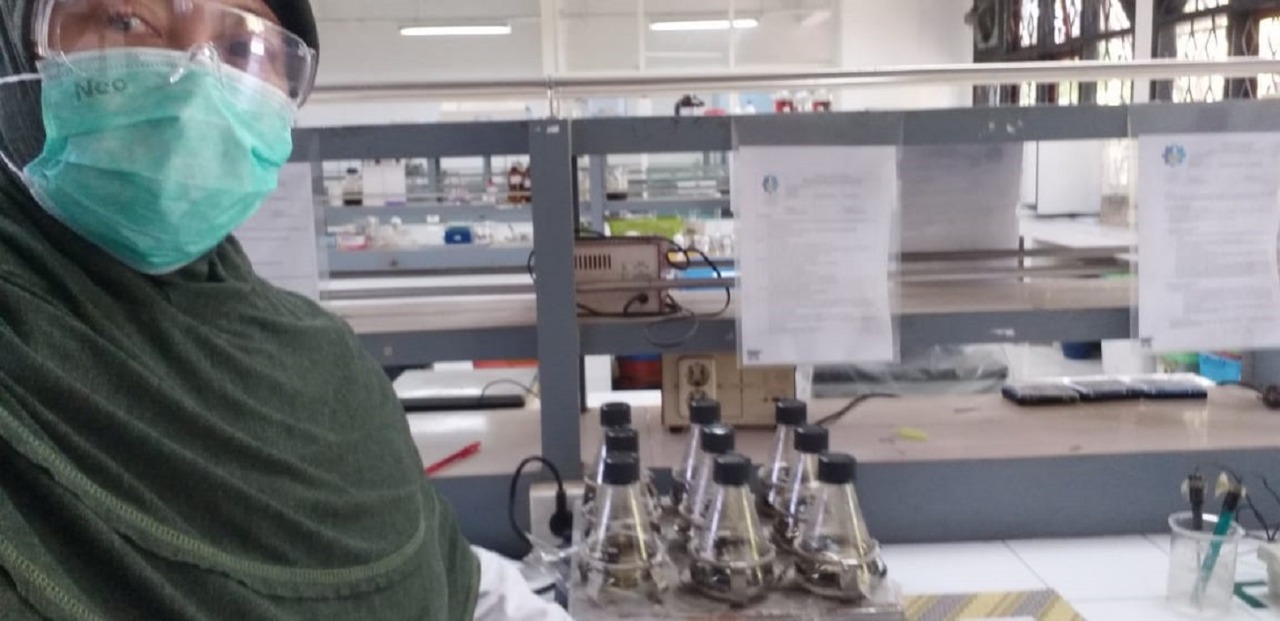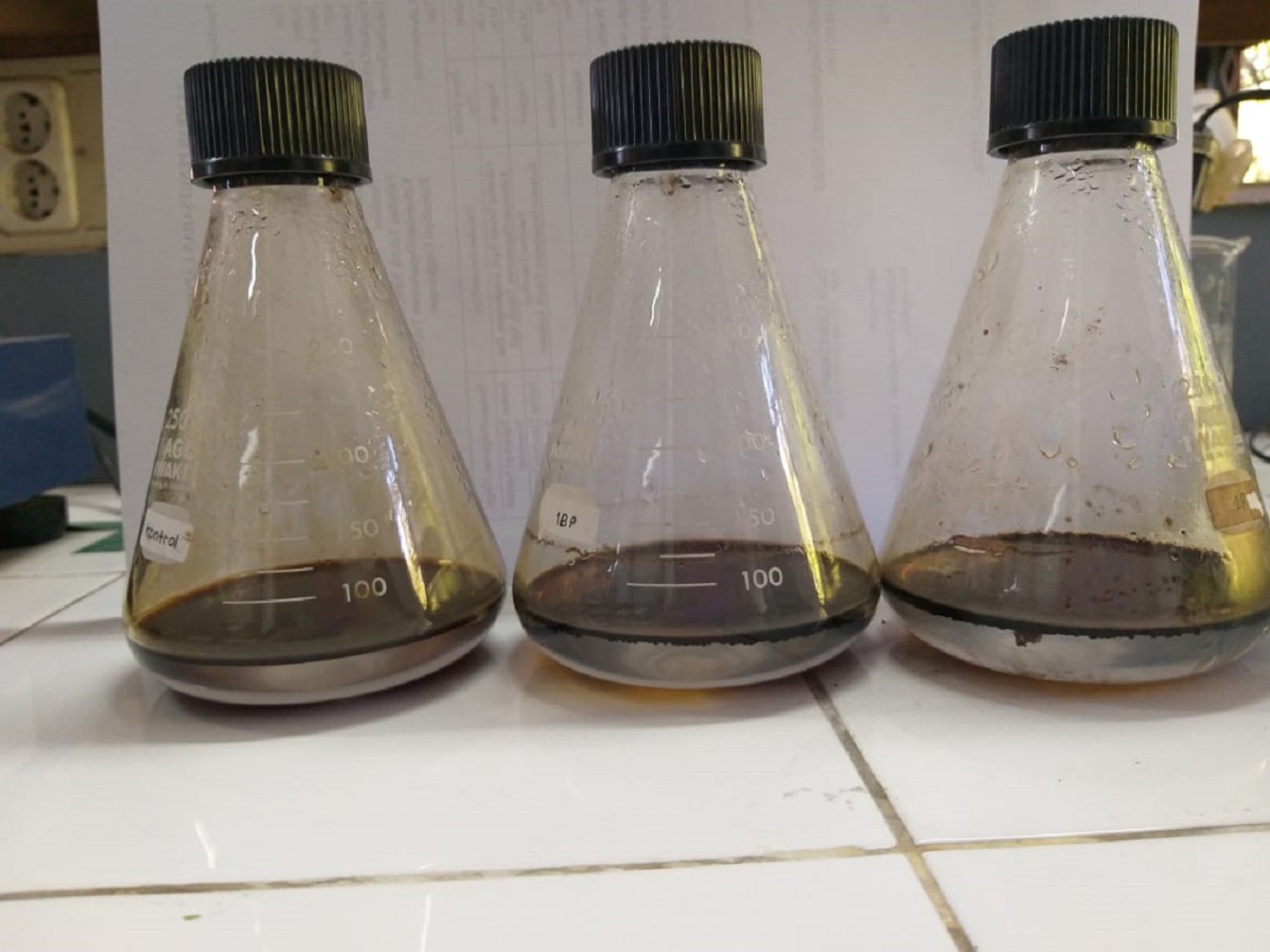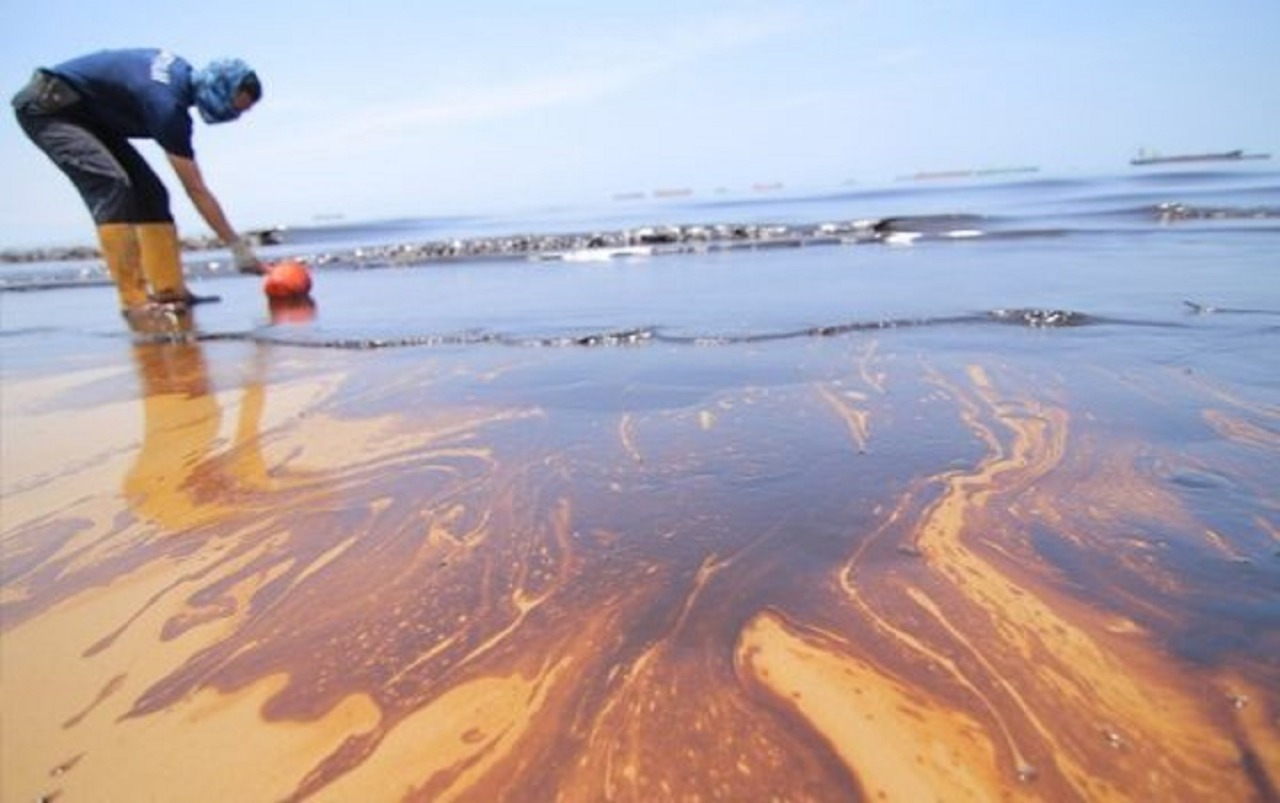Overcome Petroleum Pollution in the Sea with Bacteria

Harmin Sulistyaning Titah ST MT PhD while conducting research to decompose petroleum pollutants using microorganisms in the laboratory
ITS Campus, ITS News – One of the benefits of microorganisms is restoring the condition of the polluted ecosystem so that it returns to normal. Biodegradation is a pollution recovery method that utilizes certain microorganisms by decomposing pollutant chemical compounds. This biodegradation can also be an environmentally friendly solution in a polluted environment.
Institut Teknologi Sepuluh Nopember (ITS) academic community conducted this research. The team consists of Harmin Sulistyaning Titah ST MT Ph.D. (03Department of Environmental Engineering), Herman Pratikno ST MT Ph.D. (Lecturer of the Department of Marine Engineering), Ipung Fitri Purwanti ST MT Ph.D. (Lecturer of the Department of Marine Engineering). Environmental Engineering), and Widhowati Kesoema Wardhani ST (PMDSU Department of Environmental Engineering).
In this study, the research team used biodegradation to solve the problem of petroleum pollution that occurs in the sea. Petroleum pollution can be caused by leaks during oil drilling activities and spills when shipping.

Pollutant samples in the laboratory to be decomposed by microorganisms
Harmin said that the value of Total Petroleum Hydrocarbon (TPH) determines the level of contamination. In polluted seawater samples taken from Madura waters, the TPH value was 2,600-3,000 mg/L. In comparison, the TPH value for a suitable environment was 1,000 mg/L or below 1 percent. “This means that the seawater in the area is very polluted,” she said.
Biodegradation in this study utilizes the bacteria Bacillus subtilis and Pseudomonas putida. Harmin explained that his research used a stepwise method, where this method is a combination method of adding two bacteria. For example, the combination uses Pseudomonas putida bacteria to decompose the sample first, then added Bacillus subtilis bacteria.
The purpose of using this method is to determine the effectiveness of bacteria in decomposing chemical compounds with high levels of pollutants. Pollutant samples have decomposed as much as 66 percent in 35 days of laboratory testing. “This combination has a higher effectiveness in breaking down bacteria,” Harmin said.
In addition, Harmin also said that in addition to the type of bacteria that is effectively used to decompose pollutants, there are additional nutrients as other food for bacteria. These nutrients are obtained from fertilizers that contain the chemical elements nitrogen, phosphorus, and potassium. The function of these nutrients is to accelerate the decomposition process of pollutants in the sample.

Illustration of petroleum pollutant pollution in the sea (source from Jawapos.com)
The researcher also stated that the advantages of this biodegradation are the bacteria Bacillus subtilis and Pseudomonas putida, each of which can decompose pollutants very well, combined into one in this study. However, the drawback of this study is the very long duration of biodegradation. “If you want to be completely pollutant-free, it will take three months,” she added.
She hopes that soon, anyone can apply this research on an absolute scale, not only on a laboratory scale. It is still necessary to pay attention to many factors such as the size of the polluted area, sea waves, climate, and the number of bacteria that the researchers must prepare. (NA / ITS PR)
Reporter: Regy Zaid Zakaria
Related News
-
ITS Lecturer Introduces Madurese Culture to the International Stage
ITS Campus, ITS News — Continuing to show local wisdom to the world community, this time a lecturer from the Department
March 01, 2022 19:03 -
ITS Researchers Remind TKDN is Crucial for Economic Independence
ITS Campus, ITS News — The Domestic Component Level (TKDN) is the key to restoring the glory of the Indonesian
March 01, 2022 19:03 -
Strengthening Quality Education, ITS Professor Develops Adaptive Technology for Students
ITS Campus, ITS News — Differences in students’ abilities in understanding lessons are often a challenge for teachers in the classroom.
March 01, 2022 19:03 -
ITS Graduates Create Reverse Logistics Model for PET Plastic Waste Recycling
ITS Campus, ITS News — Doctoral graduate from the Department of Industrial and Systems Engineering, Sepuluh Nopember Institute of Technology (ITS) Dr. Yuniar
March 01, 2022 19:03
